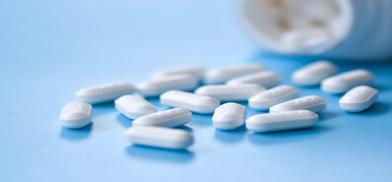Can India's pharma soft power work in South Asia?
Indian pharma’s soft power has, no doubt, opened up possibilities for foreign policy in the neighbourhood, writes N Chandra Mohan for South Asia Monitor

An anti-malarial drug, hydroxychloroquine (HCQ), is being hailed as a “rock star” or “global strategic asset” of India's COVID-19 diplomacy. The gratitude expressed at the highest political levels in many of the 55-odd countries that have received this medicine – the most euphoric being Brazil’s President Jair Bolsonaro who compared it to ‘Sanjeevani booti’ or miracle herb – testify to evolving possibilities of Indian pharma’s soft power being harnessed to further foreign policy objectives. Nowhere is this exemplified more than in the South Asian region where India has supplied this medication free or on a preferential basis.
HCQ was a run-of-the-mill medication till recently that hardly made headlines. Its market size in the 12-months ended February 2020 was INR 1.5 billion. But its fortunes dramatically looked up when US President Donald Trump considered it a “game-changer” together with azithromycin in the fight against COVID-19. The Indian Council of Medical Research also recommended HCQ as a preventive treatment for frontline health personnel. It flew off the shelves as panic-stricken citizens stocked up on this tablet, forcing the Indian government to ban its export on March 25. Under pressure from the US President, this ban was lifted in early April. The rest is history.
HCQ is used for treating malaria and auto-immune disorders like lupus and rheumatoid arthritis. Its efficacy in treating COVID-19 has so far not been conclusively established in large scale, double-blind randomized controlled trials. In the US, a panel of experts constituted by the National Institute of Allergy and Infectious Diseases stated there was insufficient data to “recommend either for or against” HCQ or chloroquine. The panel weighed against HCQ’s use with azithromycin due to the risk of erratic heartbeats. Like HCQ, there are others like Remdesivir used for Ebola or Favipiravir for influenza viruses that are being explored to treat COVID-19.
HCQ’s “rock star” status thus hinges on its unproven efficacy. There are no prizes for guessing it will be dumped if it has limited therapeutic use for COVID-19. Memories are short but India pharma’s soft power was truly showcased more than two decades ago when Dr Yusuf Hamied of Cipla produced a generic cocktail of anti-AIDS medication for USD 350 per patient per year or USD 1 per patient per day when global giants were selling it for USD 10,000 per patient per year. That saved millions of lives of Africa that was being ravaged by this disease. Global pharma giants were forced to slash prices so that even the poor could afford AIDS medication.
Indian pharma’s soft power has, no doubt, opened up possibilities for foreign policy in the neighbourhood. The viral pandemic provided Prime Minister Narendra Modi an opportunity on March 15 to reach out to the South Asian Association for Regional Cooperation (SAARC) after several years. Due to problems with Pakistan, this grouping receded from his priorities in favour of the Bay of Bengal Initiative for Multi-Sectoral Technical and Economic Cooperation (BIMSTEC). PM Modi’s video conference with SAARC leaders and the follow up with medical supplies exemplify how soft power can further opportunities for regional cooperation.
India participated in a video conference of SAARC health ministers hosted by Pakistan on April 23. This event followed India’s earlier initiative of hosting a conference of senior health professionals on March 26 which kicked off an outcome-driven exercise to step up regional cooperation in the fight against COVID-19. There is much that India can contribute to its capabilities in producing affordable medicines and healthcare delivery. South Asia has limited resources. Its human security indicators per person are woefully inadequate. The region is dependent on public health institutions, which is short of the requirement.
According to the South Asia Alliance for Poverty Eradication, Bangladesh has 112 intensive care unit beds and 400 ventilators for a population of 165 million. Pakistan, a country of 220 million people, has a bed-to-population ratio of less than one per 1,000 when the recommended average by the World Health Organisation is five per 1,000. Nepal has about 360 ventilator machines in the country and 260 of them are in the Kathmandu Valley. Afghanistan is also facing a severe shortage of coronavirus tests and ventilators. Sri Lanka only has about 600 ICU beds with ventilators. India by contrast has a much larger medical infrastructure.
India’s challenge is to ensure that the COVID-19 crisis doesn’t go beyond the health capacity of the region. C Uday Bhaskar, Director, Society of Policy Studies, has warned that if COVID-19’s spread is not contained, a huge human security catastrophe may engulf South Asia. To avert this, India must rapidly disseminate its best practices -- as Kerala has demonstrated -- in containing this virus. Besides medicines and vaccines, India must be ready to send its frontline healthcare professionals to help out countries in the region. SAARC thus may well turn out to be a triumph of Indian pharma’s soft power.
(The writer is an economics and business commentator based in New Delhi)










Post a Comment